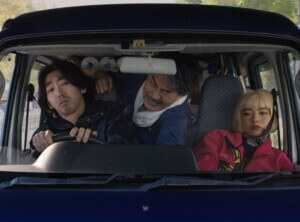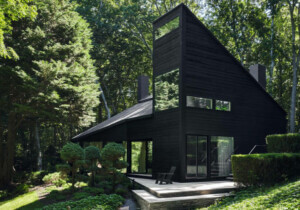Bringin’ it back to the old school, to the days of 3D online meet-up spots and avatars, when chat rooms were actual digitally-modelled rooms, “Breaking Out and Breaking In” was a “distributed film fest,” where users watched movies at home and came together in the comments section of BLDGBLOG to discuss the films. It was a blurring of the real and the digital. In partnership with Filmmaker magazine, the series focused on films which were either about bank heists (breaking in) or prison escapes (breaking out), positing them as “the use and misuse of space.” Films were watched during a period of four months, and the festival culminated with a panel discussion at Columbia’s GSAPP featuring two FBI agents alongside designers and critics.
The panel was moderated by Studio-X director Geoff Manaugh, and consisted of Jimmy Stamp, writer and editor from Yale University, Matt Jones, designer and principal of Berg, Special Agent Brenda Cotton, bank robbery coordinator with the FBI, and Thomas McShane, a retired special agent from the FBI Art Crime Team.
The discussion explored a variety of questions, including how criminals need to understand buildings differently from architects as they attempt to subvert them and what the alternate routes and spatial scenarios of crimes reveal about hidden architectures within buildings. Through a close analysis of classic heist movies and escape films, and with the help of the virtual pop-up space of the online comments, the film fest attempted to answer these questions. The panel zoomed out, looking at the practice of breaking in/out in general.
Jimmy Stamp explained how in academia they took a very rational approach to analysis of crimino-spatial activity, but after a writer from Law and Order visited the school, they were taken aback at how emotional and real these stories were. “These were actual people being murdered,” he said. While a student at Yale, Stamp co-organized a crime and architecture symposium called “Fugitive Geographies,” but also worked as a bank designer in San Francisco, designing odd, maze-like structures, which to his surprise, clients often loved. Using check counters as barriers against robbery, sometimes counter-intuitive plans were favored. Stamp quipped, “As long as your bank is harder to rob than the one next door.”
Brenda Cotton, who had the most practical experience with bank heists made some interesting comparisons of Los Angeles to New York, having worked in both cities. Los Angeles has freeways and parking, which make it much easier to rob a bank there. In New York, there is less parking and more congestion with less access to freeways. Also, surveillance in New York is much better. When a bank is robbed, the first thing the FBI does is canvass for security footage. It can come from banks, nearby businesses, the subways, and the NYPD.
McShane recounted stories of various NYC criminals who used nefarious architectural experiences to rob people. The Fly was especially athletic and would climb buildings, sneaking into windows and handing valuables down to friends waiting below. He also noted that museums are guarded by people making very little money, and are thus vulnerable to heists.
Designer Matt Jones explained that crime is a series of designs and counter designs. Cameras were designed, then facepaint to obscure the camera’s watching eye would be invented, so cameras that were immune to the facepaint would crop up. Scott MacCauley, editor-in-chief at Filmmaker, spoke of his time making films, where consideration must be made for realistic movies. For instance, you can’t bounce around from neighborhood to neighborhood and maintain the spatial drama that is required for a heist movie. Overall, an entertaining night, which ventured outside the box (and into the tunnel) for architectural insight from a well-rounded panel.










